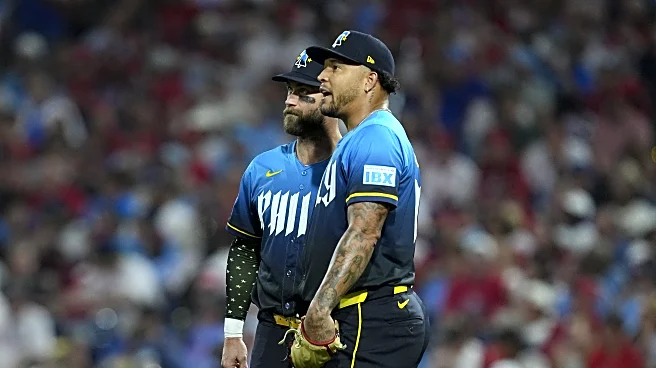What's Happening?
The Minnesota Twins are navigating a complex situation with their pitching staff as they integrate new players into their rotation. Taj Bradley delivered an impressive performance in his second start for the Twins, allowing only one run on one hit over five innings, with six strikeouts and three walks. His effective use of offspeed pitches, particularly his splitter, has generated optimism about his future contributions. In contrast, Mick Abel, acquired in a trade with the Phillies, struggled in his relief role, marking his first Major League appearance in this capacity. The Twins are experimenting with Abel in a 'piggyback' role, where he pitches multiple innings with several days of rest, aiming to simulate a starter's workload while accommodating six starting pitchers in a five-man rotation.
Why It's Important?
The Twins' decision to adjust their pitching strategy is crucial as they aim to optimize their roster for the postseason. Bradley's strong performance offers hope for bolstering the rotation, potentially enhancing the team's competitiveness. However, Abel's struggles highlight the challenges of transitioning a player from a starting role to relief, which could impact the team's overall pitching depth and effectiveness. Successfully managing this rotation crunch is vital for the Twins as they seek to maintain their winning momentum and secure a playoff spot.
What's Next?
The Twins will continue to evaluate their pitching staff's performance and make necessary adjustments to maximize their effectiveness. Bradley's role is likely to be solidified if he maintains his current form, while Abel may need further adaptation to his new role. The team's management will need to decide how best to deploy their pitchers to ensure optimal performance as they approach the postseason. This may involve strategic decisions about rotation order and bullpen usage.
Beyond the Headlines
The Twins' approach to handling their pitching staff could set a precedent for other teams facing similar challenges. The use of 'piggyback' roles and flexible rotation strategies may become more common as teams look to maximize their roster's potential. This situation also underscores the importance of player adaptability and the impact of trades on team dynamics.













